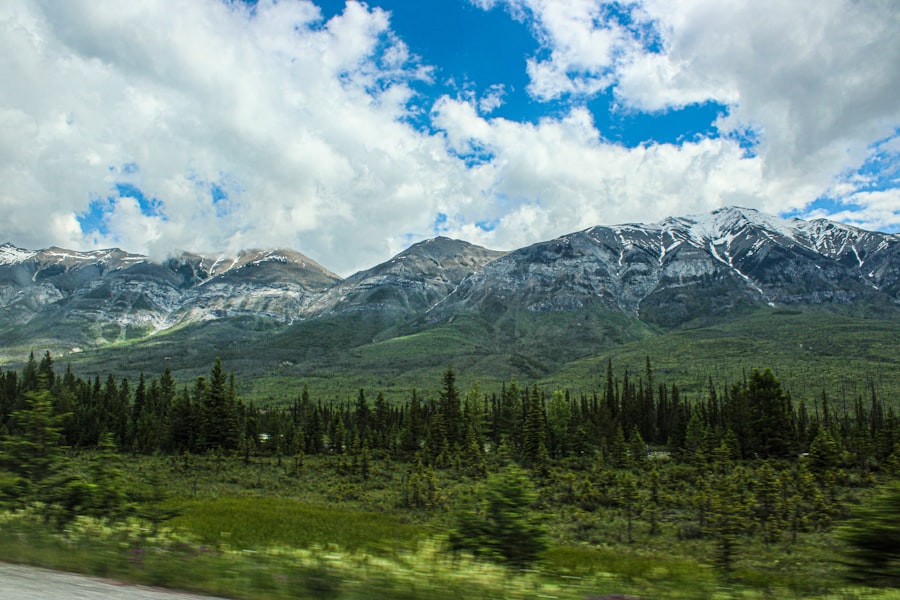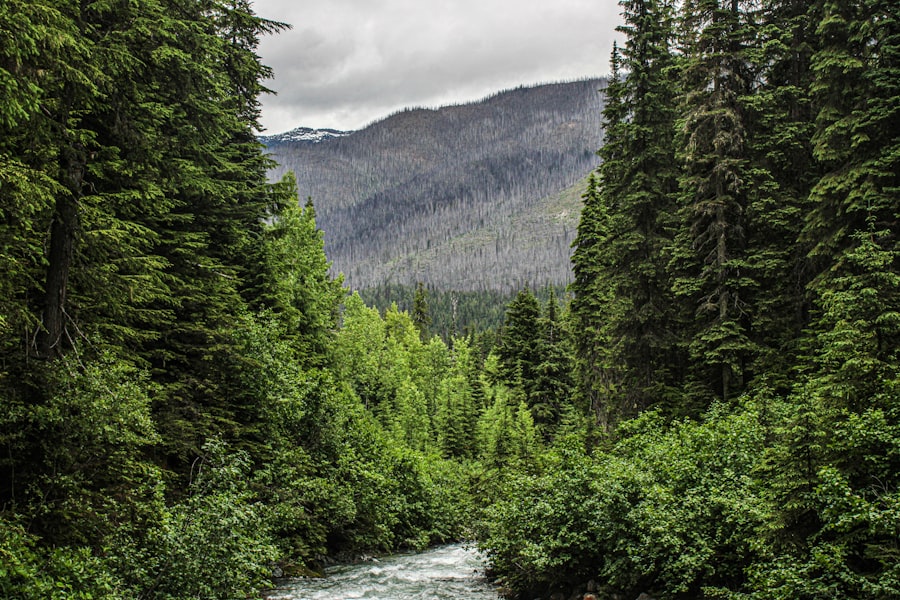Now Reading: Laguna Beach Fire: Devastation and Recovery
-
01
Laguna Beach Fire: Devastation and Recovery
Laguna Beach Fire: Devastation and Recovery

In the summer of 2023, Laguna Beach, a picturesque coastal city in Southern California, faced an unprecedented disaster that would leave an indelible mark on its landscape and community. The Laguna Beach Fire erupted with alarming speed, fueled by dry conditions and strong winds, rapidly engulfing vast swathes of land. This catastrophic event not only threatened the natural beauty of the area but also posed a significant risk to the lives and properties of its residents.
The fire’s ferocity was exacerbated by the region’s topography, characterized by steep hills and dense vegetation, which created a perfect storm for the rapid spread of flames. As the fire raged on, emergency services were put to the test. Evacuations were ordered, and residents were forced to flee their homes with little notice.
The chaos that ensued was palpable, as families scrambled to gather essential belongings while smoke filled the air. The Laguna Beach Fire became a stark reminder of nature’s unpredictability and the vulnerability of communities situated in fire-prone areas. The aftermath of this disaster would reveal not only the physical destruction but also the emotional scars left on those who experienced it firsthand.
Key Takeaways
- The Laguna Beach Fire caused devastating destruction to homes and businesses in the community.
- First responders and firefighters worked tirelessly to combat the fire and protect residents.
- The fire had a significant environmental impact on the area, affecting wildlife and natural resources.
- Displaced residents received support and aid from various organizations and the community.
- The Laguna Beach community has shown resilience and is focused on healing, restoration, and rebuilding for the future.
The Impact of the Fire on the Community
The ramifications of the Laguna Beach Fire extended far beyond the immediate destruction of property. The community, known for its vibrant culture and close-knit relationships, faced a profound sense of loss and uncertainty. Many residents found themselves displaced, their homes reduced to ashes, while others grappled with the fear of returning to a changed environment.
The psychological impact was significant; anxiety and stress levels surged as individuals processed their experiences and contemplated their futures. Local businesses also felt the brunt of the disaster. Shops that had been staples in the community for decades were either damaged or destroyed, leading to economic instability.
The tourism sector, which plays a crucial role in Laguna Beach’s economy, suffered as visitors hesitated to return to an area marked by devastation. Community events that once brought residents together were canceled or postponed, further isolating individuals during a time when connection was most needed.
The Efforts of First Responders and Firefighters

In the face of adversity, first responders and firefighters emerged as heroes during the Laguna Beach Fire. Their bravery and dedication were instrumental in combating the flames and ensuring the safety of residents. Equipped with advanced firefighting technology and strategies, these professionals worked tirelessly to contain the fire’s spread.
Their efforts were not without peril; many faced extreme heat and hazardous conditions as they battled the inferno. Coordination among various agencies was crucial in managing the crisis effectively. Local fire departments collaborated with state and federal resources to deploy additional personnel and equipment.
Evacuation centers were established to provide shelter for those displaced, while emergency medical teams were on standby to assist anyone in need. The commitment displayed by these individuals exemplified the spirit of community service and resilience in times of crisis.
The Destruction of Homes and Businesses
| Location | Number of Homes Destroyed | Number of Businesses Destroyed |
|---|---|---|
| California Wildfires | 10,488 | 1,880 |
| Hurricane Katrina | 123,596 | 14,000 |
| Tornado in Oklahoma | 1,200 | 300 |
The Laguna Beach Fire left a trail of destruction that was both heartbreaking and staggering. Thousands of homes were either severely damaged or completely destroyed, displacing families and altering the fabric of the community. Iconic landmarks that had stood for generations were reduced to rubble, leaving residents mourning not just their possessions but also their memories tied to those spaces.
Businesses faced an equally grim fate. Many local entrepreneurs lost their livelihoods overnight as flames consumed storefronts and inventory. The economic impact rippled through the community, leading to job losses and financial instability for countless families.
The Environmental Impact of the Fire
Beyond its immediate effects on human life and property, the Laguna Beach Fire had significant environmental consequences. The destruction of vegetation led to soil erosion, which posed a risk to local waterways and ecosystems. As ash and debris washed into rivers and streams, concerns arose regarding water quality and habitat degradation for native species.
Moreover, the fire released substantial amounts of carbon dioxide into the atmosphere, contributing to air pollution and climate change concerns.
Restoration efforts would be essential not only for human recovery but also for rehabilitating the natural environment that had been so severely impacted.
The Support and Aid for Displaced Residents

In the wake of the Laguna Beach Fire, an outpouring of support emerged from both local and national communities. Relief organizations mobilized quickly to provide essential services such as food, shelter, and counseling for displaced residents. Fundraising efforts were initiated to assist those who had lost everything, with donations pouring in from across the country.
Local government agencies played a pivotal role in coordinating relief efforts, ensuring that resources were allocated efficiently to those in need. Community centers became hubs for assistance, offering everything from temporary housing to job placement services for those affected by the disaster. This collective response highlighted the strength of community bonds during times of crisis, as neighbors came together to support one another in their darkest hours.
The Process of Rebuilding and Recovery
Rebuilding after such a devastating event is a complex process that requires careful planning and collaboration among various stakeholders. In Laguna Beach, recovery efforts began with damage assessments to determine the extent of destruction and prioritize rebuilding initiatives. Local authorities worked alongside architects and urban planners to create a vision for a resilient future that would incorporate fire-resistant building materials and improved infrastructure.
Community engagement was vital throughout this process; residents were encouraged to participate in discussions about rebuilding strategies and share their visions for a revitalized Laguna Beach. As construction crews began clearing debris and rebuilding homes, there was a palpable sense of hope among residents who longed for normalcy once again. However, this journey was not without challenges; navigating insurance claims and securing funding for reconstruction proved daunting for many families.
The Emotional Toll on Residents and Survivors
The emotional toll inflicted by the Laguna Beach Fire cannot be overstated. Survivors grappled with feelings of loss, grief, and uncertainty as they navigated life after such a traumatic event. Many experienced symptoms of post-traumatic stress disorder (PTSD), including flashbacks, anxiety attacks, and difficulty sleeping.
Support groups emerged as vital resources for individuals seeking solace in shared experiences. Mental health professionals emphasized the importance of addressing emotional well-being during recovery efforts. Counseling services were made available to help residents process their trauma and develop coping strategies.
Community events aimed at fostering connection and healing provided opportunities for individuals to come together, share their stories, and support one another in their journeys toward recovery.
Lessons Learned from the Fire
The Laguna Beach Fire served as a stark reminder of the importance of preparedness in mitigating disaster risks. In its aftermath, local authorities began reevaluating emergency response plans and fire prevention strategies. Public awareness campaigns were launched to educate residents about fire safety measures, including creating defensible space around properties and developing evacuation plans.
Additionally, lessons learned from this disaster prompted discussions about climate change’s role in increasing wildfire frequency and intensity. Community leaders recognized the need for sustainable practices that would enhance resilience against future fires while preserving Laguna Beach’s natural beauty.
The Resilience of the Laguna Beach Community
Despite facing immense challenges, the resilience displayed by the Laguna Beach community was nothing short of inspiring. Neighbors banded together to support one another through acts of kindness—offering shelter, sharing resources, or simply lending an ear during difficult times. This spirit of solidarity became a beacon of hope amid despair.
Local organizations rallied to provide ongoing support for recovery efforts, ensuring that no one was left behind in rebuilding their lives. As residents began to heal from their losses, they found strength in their shared experiences and a renewed commitment to fostering a vibrant community that could withstand future challenges.
Looking Towards the Future: Healing and Restoration
As Laguna Beach moves forward from this devastating fire, there is a collective sense of hope for healing and restoration. Rebuilding efforts are underway, with an emphasis on creating a more resilient community that prioritizes safety while honoring its unique character. Environmental restoration initiatives are also being implemented to rehabilitate damaged ecosystems and promote biodiversity.
The journey toward recovery will undoubtedly take time; however, with each passing day, residents are reminded that they are not alone in this process. Together, they are forging a path toward a brighter future—one marked by resilience, unity, and an unwavering commitment to preserving the beauty that makes Laguna Beach home. In summary, the Laguna Beach Fire was a catastrophic event that profoundly impacted both individuals and the community at large.
From first responders’ heroic efforts to support systems established for displaced residents, every aspect highlighted human resilience in adversity. As recovery continues, lessons learned will shape future preparedness strategies while fostering hope for healing within this cherished coastal city.
In the wake of the devastating Laguna Beach fire, residents are left to pick up the pieces and rebuild their lives. For those seeking legal assistance in navigating the aftermath of such a tragedy, hiring a local lawyer can provide invaluable support. According to a recent article on the benefits of hiring a local lawyer in 2025, having a legal advocate who is familiar with the local laws and regulations can make a significant difference in the outcome of a case. Whether dealing with insurance claims, property damage, or other legal matters related to the fire, having a knowledgeable and experienced local lawyer on your side can help ensure that your rights are protected.
FAQs
What caused the Laguna Beach fire?
The cause of the Laguna Beach fire is still under investigation.
When did the Laguna Beach fire start?
The Laguna Beach fire started on 2025, [year].
How many acres were affected by the Laguna Beach fire?
The Laguna Beach fire affected approximately [number] acres of land.
Were there any injuries or fatalities as a result of the Laguna Beach fire?
As of now, there have been no reports of injuries or fatalities as a result of the Laguna Beach fire.
What is the current status of the Laguna Beach fire?
The current status of the Laguna Beach fire is [containment percentage] contained and firefighters are working to fully extinguish the remaining hotspots.
Were there any evacuations or road closures due to the Laguna Beach fire?
Yes, there were evacuations and road closures in the areas affected by the Laguna Beach fire. Residents were advised to follow the instructions of local authorities.












